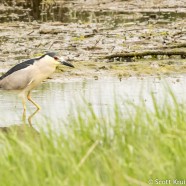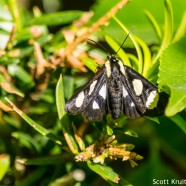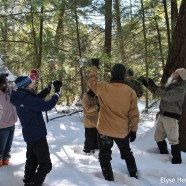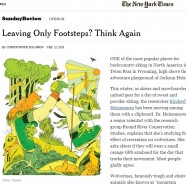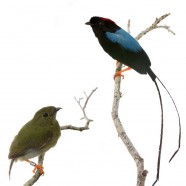Black-crowned Night-Heron
Here we have a foraging Black-crowned Night-Heron (Nycticorax nycticorax), a long-legged wader of marshes, ponds, and wetlands, enjoying fresh, salt or brackish waters. They are actually the most widespread heron in the world! Have they spread to your neighborhood? It is yet another of the many species we work to help through our efforts in the Audubon Alliance for Coastal Waterbirds. Scott Kruitbosch Conservation & Outreach Coordinator
Read MoreEight-spotted Forester
This Eight-spotted Forester (Alypia octomaculata) was photographed in poor conditions with the bright, noon sun shining down on the otherwise cool, black body, creating an iridescent look. More moths are popping up by the day…or night…or both!
Read MoreSurvey Work Continues
Call us crazy, but we have done it again: bundled ourselves up and trudged around in knee deep snow to survey for the deadly Hemlock Woolly Adelgid. This time, our JCC/CWC/RTPI survey team traveled down to Warren County to visit the Hatch Run Conservation Demonstration Area for the second year in a row. This site is loaded with Eastern Hemlock trees that make up a beautiful and valuable riparian zone between the streams and upland forests. We are happy to report that we didn’t find the pest we were after (which is a good thing!) and being in that particular site made us really think....
Read More“Leaving Only Footsteps? Think Again”
Here’s an interesting opinion piece in the New York Times that details how even passive recreation can have an unexpectedly high impact on wildlife. These are all issues we as scientists have dealt with at one time or another, from how placement of trails in preserves is vital to protect certain species and the fact they create unsuitable edge habitat, how passive recreation activities like hiking can have negative impacts in the same way something like snowmobiling could (or more, as they can occur in all seasons and not just winter), and that a day at the beach disrupts birds like...
Read MoreLong-tailed Manakin (Chiroxiphia linearis) Pair
We have showed you the exquisite male previously but here we have both the Long-tailed Manakin (Chiroxiphia linearis) male and a lovely female by RTPI Affiliate Sean Graesser. He notes that you can see the interesting sexual dimorphism Manakins have. Most species congregate in a lek, where the males perform a dance for the female, after which she makes the nest and raises the chicks. Photographed for the Meet Your Neighbours global biodiversity project in Costa Rica.
Read More



